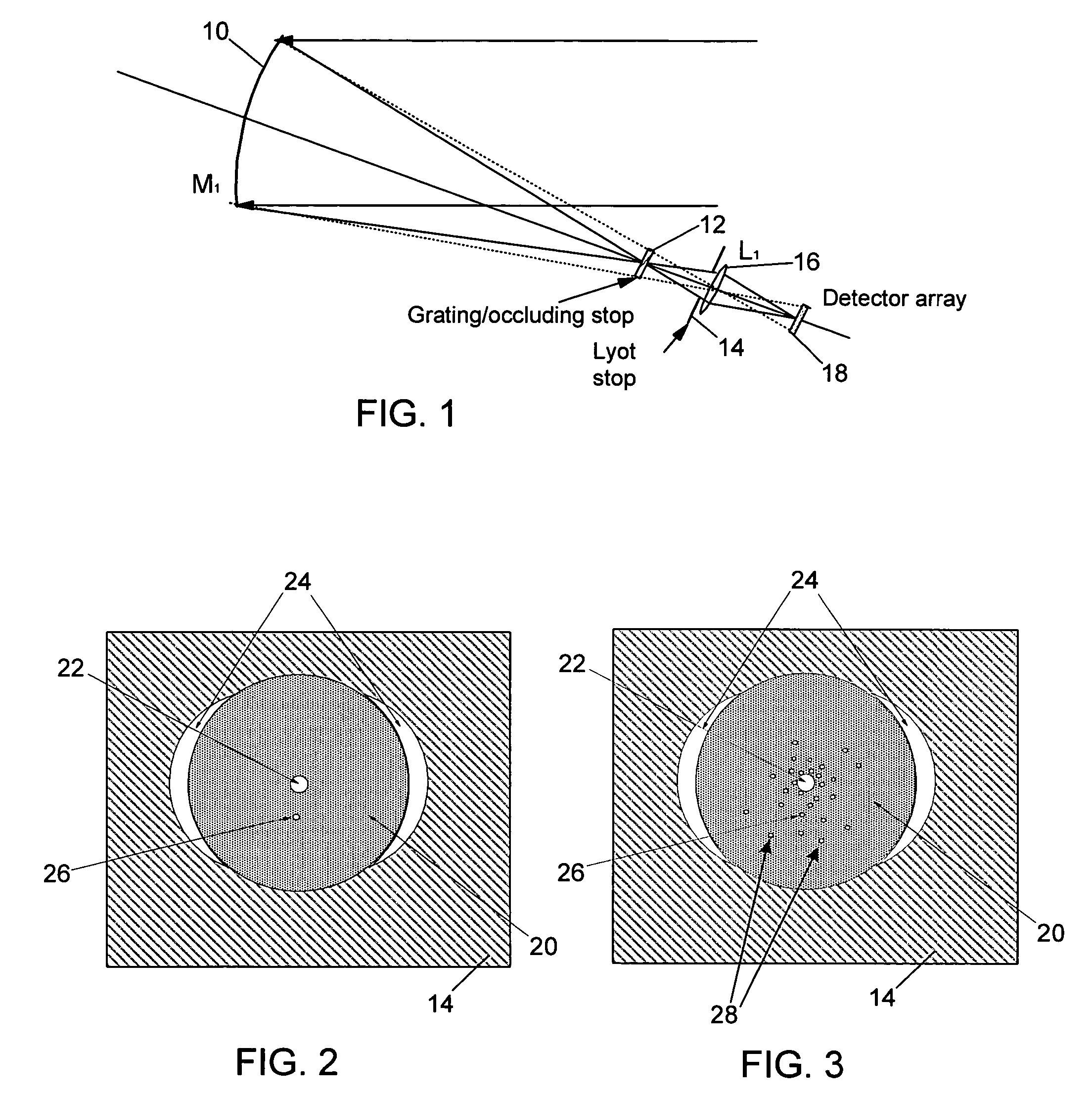Distinguishing mirror speckle from target images in weak signal applications
a weak signal and target image technology, applied in the field of optical image processing, can solve the problems of difficult to detect reflected light from a planet in the same field of view, affecting the direct terrestrial observation of planets in distant star systems, and affecting the accuracy of optical image processing results
- Summary
- Abstract
- Description
- Claims
- Application Information
AI Technical Summary
Benefits of technology
Problems solved by technology
Method used
Image
Examples
Embodiment Construction
[0024]As shown in the drawings for purposes of illustration, the present invention pertains to techniques for locating distant planets using a stellar coronagraph. Although a spaced-based stellar coronagraph of suitable size is capable if imaging planetary objects close to distant star, the coronagraph is known to produce confusingly similar speckles imaged with the planetary spot or spots. The speckles are caused by physical disturbances in major optical components, such a primary mirror. Distinguishing a planetary image spot from unwanted but similar speckles in the image has, until the present invention, proved to be an elusive and expensive proposition.
[0025]In accordance with the present invention, image speckles due to mirror disturbances are identifiable by applying a deliberate spatially periodic disturbance to the mirror, which causes the irradiance of each speckle to vary periodically, while the planetary image is not subject to this irradiance variation.
[0026]FIG. 1 is an...
PUM
 Login to View More
Login to View More Abstract
Description
Claims
Application Information
 Login to View More
Login to View More - R&D
- Intellectual Property
- Life Sciences
- Materials
- Tech Scout
- Unparalleled Data Quality
- Higher Quality Content
- 60% Fewer Hallucinations
Browse by: Latest US Patents, China's latest patents, Technical Efficacy Thesaurus, Application Domain, Technology Topic, Popular Technical Reports.
© 2025 PatSnap. All rights reserved.Legal|Privacy policy|Modern Slavery Act Transparency Statement|Sitemap|About US| Contact US: help@patsnap.com



